|
VALLO ALPINO RESEARCH |
||
|
- - - - - - - - - - - - - - - - - - - - - - - - - - - - - - - - - - - - - - - - - - - - - - - - - - - - - - - - - - - - - - NEWS - - - - - - - - - - - - - - - - - - - - - - - - - - - - - - - - - - - - - - - - - - - - - - - - - - - - - - - - - - - - - - ITALY'S first „VALLO ALPINO” RESEARCH PROJECT is ONLINE [EN] The first research project on the "Vallo Alpino" topic in South Tyrol was completed by the end of February 2024. Click on the image to navigate through the data visualization and download the project publication. [IT] Il primo progetto di ricerca sul tema "Vallo Alpino" in Alto Adige è stato completato a fine febbraio 2024. Cliccare sull'immagine per navigare nella visualizzazione dei dati e scaricare la pubblicazione del progetto. [DE] Das erste Forschungsprojekt zum Thema "Vallo Alpino" in Südtirol wurde mit Ende Februar 2024 abgeschlossen. Klicken Sie auf das Bild, um durch die Datenvisualisierung zu navigieren und die Projektpublikation herunterzuladen. 
EMPLOYER/COMMITTENTE/AUFTRAGGEBERIN: Provincial Museum of Franzensfeste Fortress TITLE/TITOLO/TITEL: The Italian Alpine fortifications of the Second World War – the so-called „VALLO ALPINO LITTORIO”/Il sistema italiano di fortificazioni alpine della Seconda Guerra Mondiale, il cosiddetto „VALLO ALPINO LITTORIO“/Die italienischen Alpenbefestigungen aus der Zeit des II. Weltkriegs – der sog. „VALLO ALPINO LITTORIO“ BUDGET: Funds from the research budget of the Department of Provincial Museums and the Provincial Museum of Franzensfeste Fortress, totalling approx. € 130,000 / Risorse del fondo per la ricerca di Azienda Musei provinciali e Museo Provinciale Forte di Fortezza, per un totale di ca. € 130.000 / Mittel des Forschungsfonds des Betriebs Landesmuseen und des Landesmuseums Festung Franzensfeste, insgesamt ca. € 130.000 PROJECT MANAGEMENT/DIREZIONE PROGETTUALE/PROJEKTLEITUNG: Mag. Esther Erlacher SCIENTIFIC DIRECTION/DIREZIONE SCIENTIFICA/WISSENSCHAFTLICHE LEITUNG: Arch. Heimo Prünster ADVISER AND WORKSHOP CONCEPTION/CONSULENZA E CONCEZIONE WORKSHOP/BERATUNG UND KONZEPTION WORKSHOP: Prof. Dr. Gennaro Postiglione ADVICE ON CONTEMPORARY HISTORY/CONSULENZA STORIA CONTEMPORANEA/BERATUNG ZEITGESCHICHTE: Prof. Dr. Andrea Di Michele, Dr. Giuseppe Spagnulo RESEARCH INTO CONTEMPORARY HISTORY/RICERCHE STORIA CONTEMPORANEA/RECHERCHE ZEITGESCHICHTE: Dr. Giuseppe Spagnulo DATA VISUALISATION/VISUALIZZAZIONE DATI: Dr. Florian Windhager, Mindfactor – Mag. Michael Smuc ADVICE ON DATA ORGANISATION/CONSULENZA ORGANIZZAZIONE DATI/BERATUNG DATENORGANISATION: Bauforschung Tirol (Dipl.-Ing. mag. phil. Barbara Lanz and Dipl.-Ing. Sonja Mitterer), Dipl.-Ing. Katharina Kranewitter - - - - - - - - - - - - - - - - - - - - - - - - - - - - - - - - - - - - - - - - - - - - - - - - - - - - - - - - - - - - - - PUBLICATIONS | PUBBLICAZIONI | PUBLIKATIONEN - - - - - - - - - - - - - - - - - - - - - - - - - - - - - - - - - - - - - - - - - - - - - - - - - - - - - - - - - - - - - - - 1 -»BUNKERLANDSCHAFT SÜDTIROL - PAESAGGI FORTIFICATI« [EN] Journal of the Architecture Foundation South Tyrol TURRIS BABEL, N° 108 - curated and edited by Heimo Prünster [IT] Rivista della fondazione architettura Alto Adige TURRIS BABEL, N° 108 - curato e redatto da Heimo Prünster [DE] Zeitschrift der Architekturstiftung Südtirol TURRIS BABEL, N° 108 - kuratiert und editiert von Heimo Prünster Date: 12/2017 Language: DE & IT ISSN: 2281–3292 (click on the image to download) 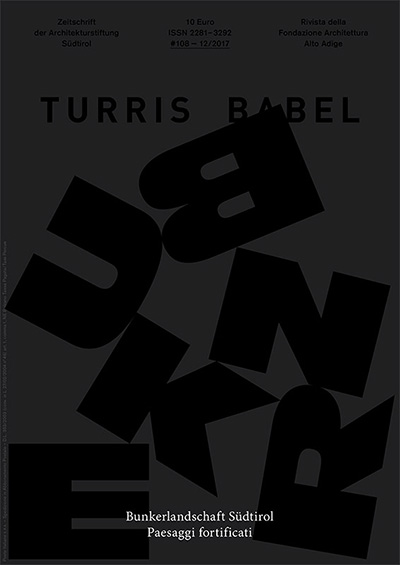
- - - - - - - - - - - - - - - - - - - - - - - - - - - - - - - - - - - - - - - - - - - - - 2 -DAS INDISKRETE AUGE - Spionagefotografie vom Bau des italienischen Alpenwalls" L’OCCHIO INDISCRETO - Fotografie di spionaggio della costruzione del Vallo Alpino" Curated & edited by Alessandro Bernasconi & Heimo Prünster Curcu&Genovese editor, 11/2016 Language: DE & IT ISBN: 978-88-6876-121-9 
- - - - - - - - - - - - - - - - - - - - - - - - - - - - - - - - - - - - - - - - - - - - - - - - - - - - - - - - - - - - - - PRESS | STAMPA | PRESSE - - - - - - - - - - - - - - - - - - - - - - - - - - - - - - - - - - - - - - - - - - - - - - - - - - - - - - - - - - - - - - REVIEW"Alto Adige 1940: quando l'alleato ci spiava"" PANORAMA.IT, 06.12.2020 Author: Edoardo Frittoli Language: IT 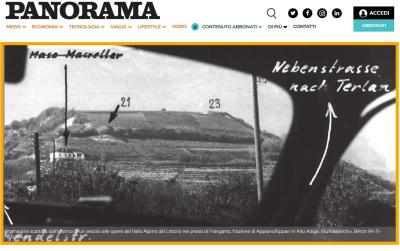
- - - - - - - - - - - - - - - - - - - - - - - - - - - - - - - - - - - - - - - - - - - ONLINE-ARTICLE"Mussolinis betongewordene Angst vor Hitler" SPIEGEL ONLINE, 05.12.2019 Author: Solveig Grothe Language: DE 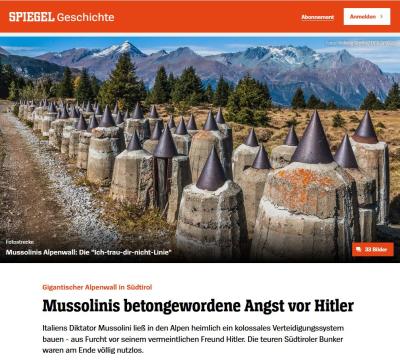
- - - - - - - - - - - - - - - - - - - - - - - - - - - - - - - - - - - - - - - - - - - - INTERVIEW"Warum sind Bunker ein Kulturerbe?" Neue Südtiroler Tageszeitung, 02.03.2024 - Nr. 44/32 Author: Heinrich Schwazer Language: DE 
- - - - - - - - - - - - - - - - - - - - - - - - - - - - - - - - - - - - - - - - - - - - PORTRAIT"Der Bunkerologe - Heimo Prünster im Portrait" Barfuss - Das Südtiroler Online Magazin, 20.09.2019 Author: Matthias Mayr Language: DE 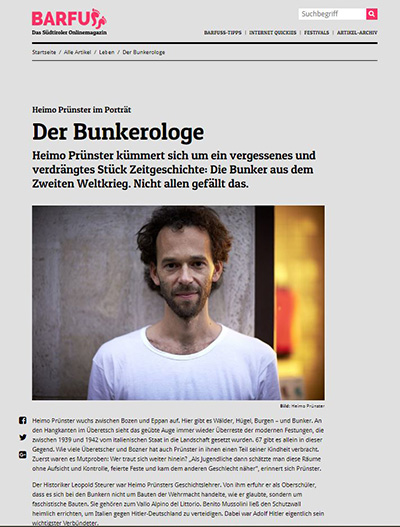
- - - - - - - - - - - - - - - - - - - - - - - - - - - - - - - - - - - - - - - - - - - - - - - - - - - - - - - - - - - - - - TV - - - - - - - - - - - - - - - - - - - - - - - - - - - - - - - - - - - - - - - - - - - - - - - - - - - - - - - - - - - - - - DOCUMENTATION"ALPENWALL - MUSSOLINIS GEHEIME BUNKER GEGEN HITLER" ZDF - Terra X History 15.09.2024 Language: DE 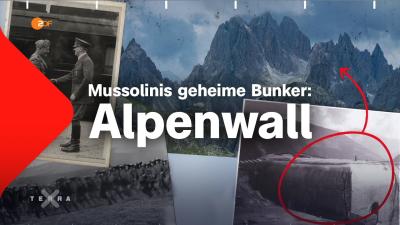 [EN] Documentary about the ‘Vallo Alpino’ and the first research project on the still little-known alpine fortification system from the fascist era in South Tyrol. [IT] Documentario sul “Vallo Alpino” e il primo progetto di ricerca sul poco conosciuto sistema di fortificazioni alpine dell’epoca fascista in Alto Adige. [DE] Dokumentation über den "Vallo Alpino" und das erste Forschungsprojekt zu dem noch wenig bekannten alpinen Befestigungssystem aus der Zeit des Faschismus in Südtirol. - - - - - - - - - - - - - - - - - - - - - - - - - - - - - - - - - - - - - - - - - - - - DOCUMENTATION"MUSSOLINI'S BUNKERSYSTEM" by Martin Hanni RAI Südtirol: Kulturzeit / Bayerischer Rundfunk: Alpen-Donau-Adria 30.10.2016 Language: DE 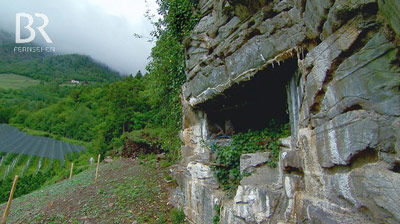 [EN] "Vallo Alpino" was the name of the defensive system of fascist Italy. In South Tyrol there are bunkers all over the country, which are nowadays beeing researched and used. [IT] "Vallo Alpino" era il nome del sistema fortificatiorio alpino dell'Italia fascista. In Alto Adige i bunker si trovano dapertutto. Oggi vengono ricercati e utilizzati. [DE] "Vallo Alpino" hieß das Verteidigungssystem des faschistischen Italiens. In Südtirol finden sich im ganzen Land Bunker, die heute neu erforscht und genutzt werden. - - - - - - - - - - - - - - - - - - - - - - - - - - - - - - - - - - - - - - - - - - - - DOCUMENTATION"SÜDTIROL"by Susanne Gebhardt ARTE / SWR 11.07.-15.07.2016 Language: DE & FR 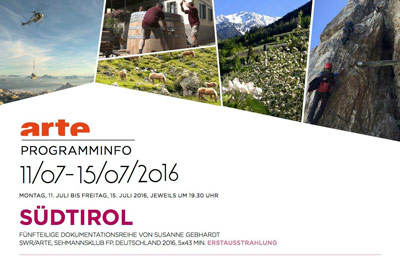 [EN] Five-part documentation series [IT] Serie di documentazione in cinque parti [DE] Fünfteilige Dokumentationsreihe  ______________________________________________________________________________________________________________________________________________________
______________________________________________________________________________________________________________________________________________________EXTRACTS FROM RESEARCH | ESTRATTI DALLA RICERCA | AUSZÜGE AUS DER FORSCHUNG ______________________________________________________________________________________________________________________________________________________ - - - - - - - - - - - - - - - - - - - - - - - - - - - - - - - - - - - - - - - - - - - - - - - - - - - - - - - - - - - - - - MAPPING | CARTOGRAFIA | KARTOGRAFIE - - - - - - - - - - - - - - - - - - - - - - - - - - - - - - - - - - - - - - - - - - - - - - - - - - - - - - - - - - - - - - - 1 -SYSTEM DEPTH | PROFONDITÀ DELLA DIFESA | SYSTEMTIEFE[EN] Schematic representation of the defence system along the Italian Alpine border. The system consists of three in depth staggered defence belts featuring many barriers extending up to 80 km inland. This type of defence was able to withstand enemy breakthroughs and, unlike single-line systems, gave the troops time to mobilise. [IT] Rappresentazione schematica del sistema difensivo lungo il confine alpino. Il sistema è costituito da tre cinture difensive scaglionate in profondità con molti sbarramenti che si estendono fino a 80 km nell'entroterra. Questo tipo di difesa era in grado di resistere agli sfondamenti nemici e, a differenza dei sistemi a linea singola, dava alle truppe il tempo di mobilitarsi. [DE] Schematische Darstellung des Verteidigungssystems entlang der italienischen Alpengrenze. Das System ist in die Tiefe gestaffelt und besteht aus drei hintereinander gereihten Verteidigungsgürteln, die bis zu 80 km ins Landesinnere reichen. Das System war in der Lage, punktuellen feindlichen Durchbrüchen standzuhalten und ermöglichte der Armee, Zeit für die Mobilisierung zu gewinnen, was bei Ein-Linien-Systemen ausgeschlossen war. 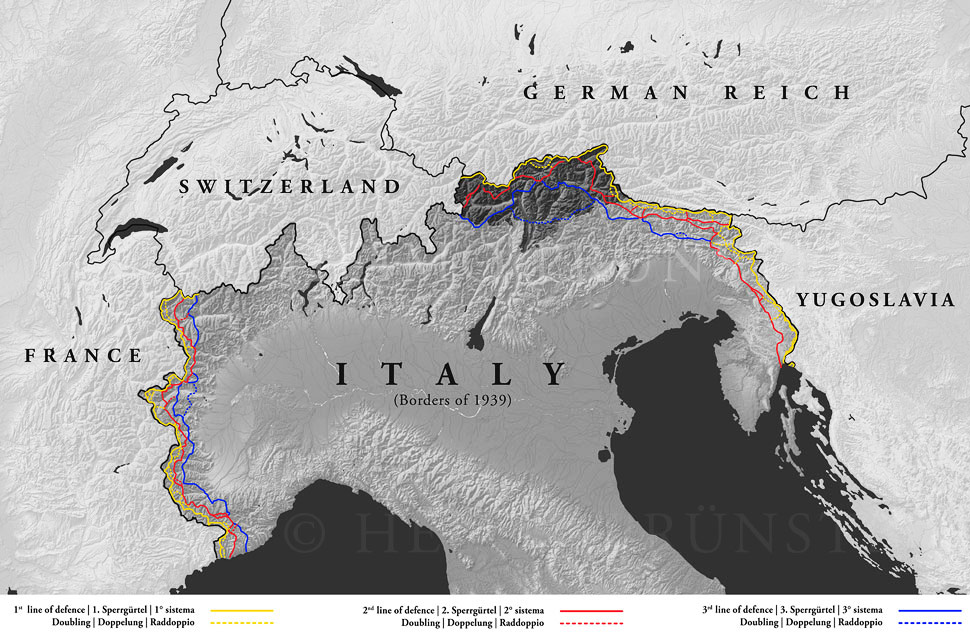
- 2 -LINES OF DEFENCE | LINEE DI DIFESA | VERTEIDIGUNGSLINIEN[EN] Representation of the three staggered defence belts covering South Tyrol. Traffic routes that had been established for thousands of years no longer played a role in view of the new military means of transport, and the terrain had to be re-examined. Military strategists studied the local distortions of the earth's surface in detail and provided barriers for all areas that could be crossed with military equipment. The belts always look for the shortest way through the valley bottom from mountain ridge to mountain ridge. [IT] Rappresentazione dei tre sistemi difensivi disposti in profondità che ricoprono l'Alto Adige. Le vie di transito stabilite da migliaia di anni non avevano più un ruolo in vista dei nuovi mezzi di trasporto militari e il terreno doveva essere riesaminato. Gli strateghi militari hanno studiato in dettaglio le deformazioni della superficie locale terrestre e hanno previsto di fortificare tutte le aree che potevano essere attraversate con attrezzature militari mediante sbarramenti. Le linee di difesa cercano sempre la via più breve attraverso il fondovalle da cresta a cresta. [DE] Darstellung der drei tiefengestaffelten Verteidigungsgürtel, die Südtirol überziehen. Über Jahrtausende etablierte Verkehrswege spielten angesichts der neuen militärischen Fortbewegungsmöglichkeiten keine Rolle mehr, das Gelände musste neu betrachtet werden. Militärstrategen studierten die lokalen Verwerfungen der Erdoberfläche bis ins Detail und sahen für alle jene Flächen, die mit militärischen Gerätschaften passierbar waren, eine Befestigung mit Sperren vor. Die Gürtel suchen von Bergkamm zu Bergkamm immer den kürzesten Weg durch die Talsohle. 
- - - - - - - - - - - - - - - - - - - - - - - - - - - - - - - - - - - - - - - - - - - - - 3 -FIRING RANGES | CAMPI DI TIRO | SCHUSSFELDER[EN] Overview of the firing ranges of all defence lines on South Tyrolean terrain. In this graph, the fields of fire were projected onto flat terrain. The effective extent of the former fields of fire would be smaller due to the unevenness of the terrain. The area of South Tyrol is 7,400 km², the total area of all shooting fields is 1,247.5 km², which is 16.31% of the national area. [IT] Panoramica dei campi di tiro di tutte le linee difensive su territorio altoatesino. In questo grafico, i campi di tiro sono stati proiettati su un terreno pianeggiante. L'estensione effettiva dei vecchi piani dei fuochi sarebbe inferiore a causa delle irregolarità del terreno. La superficie dell'Alto Adige è di 7.400 km², la superficie totale di tutti i campi di tiro è di 1.247,5 km², pari al 16,31% del territorio nazionale. [DE] Übersicht der Schussfelder aller Verteidigungslinien auf Südtiroler Terrain. In der vorliegenden Grafik wurden die Schussfelder auf ebenes Terrain projiziert. Die effektive Ausdehnung der ehemaligen Schussfelder würde durch die Unebenheiten des Geländes geringer sein. Die Fläche Südtirols beträgt 7.400 km², die Flächensumme aller Schussfelder beläuft sich auf 1.247,5 km², das sind 16,31% der Landesfläche. 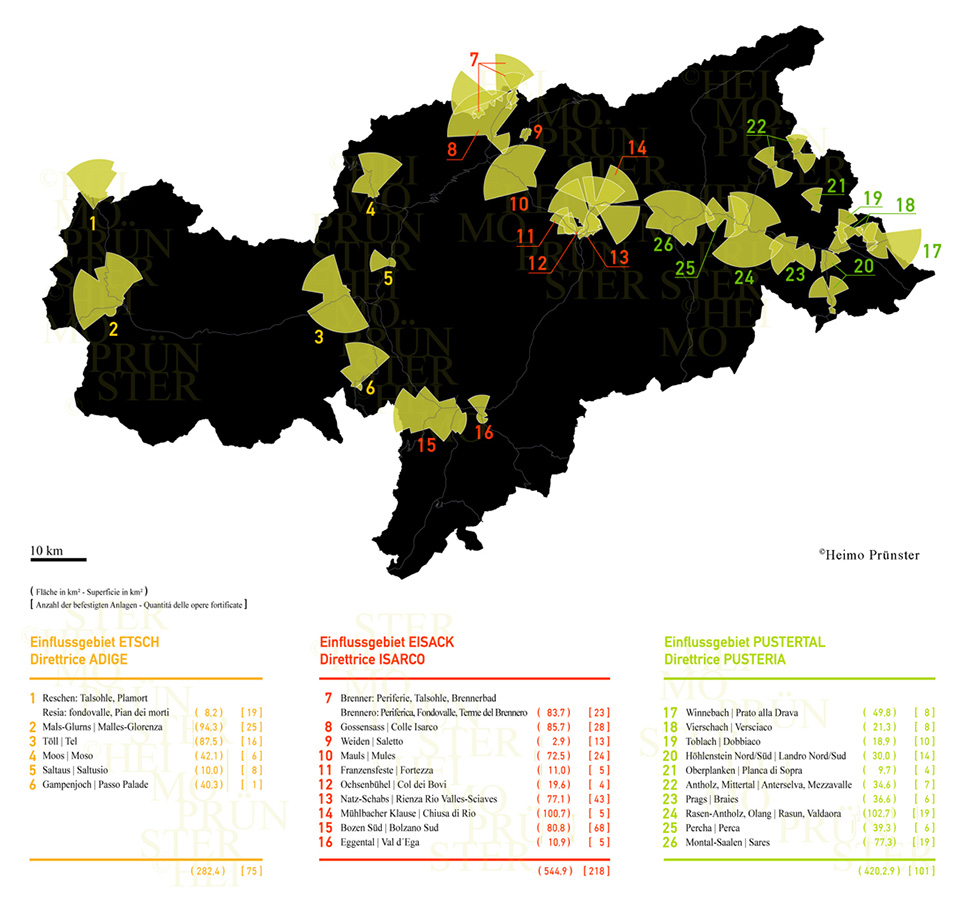
- - - - - - - - - - - - - - - - - - - - - - - - - - - - - - - - - - - - - - - - - - - - - 4 -SINGLE FIRING RANGES | CAMPI DI TIRO SINGOLARI | SCHUSSFELDER EINZELN[EN] Reconstruction of the maximum firing range of artillery and infantry weapons of the Bolzano South barrier, 1942. [IT] Ricostruzione delle gittate massime delle armi di artiglieria e di fanteria dello sbarramento Bolzano Sud, situazione nel 1942. [DE] Rekonstruktion des maximalen Schußfelds von Artillerie- und Infanteriegeschützen der Talsperre Bozen Süd, Stand 1942. 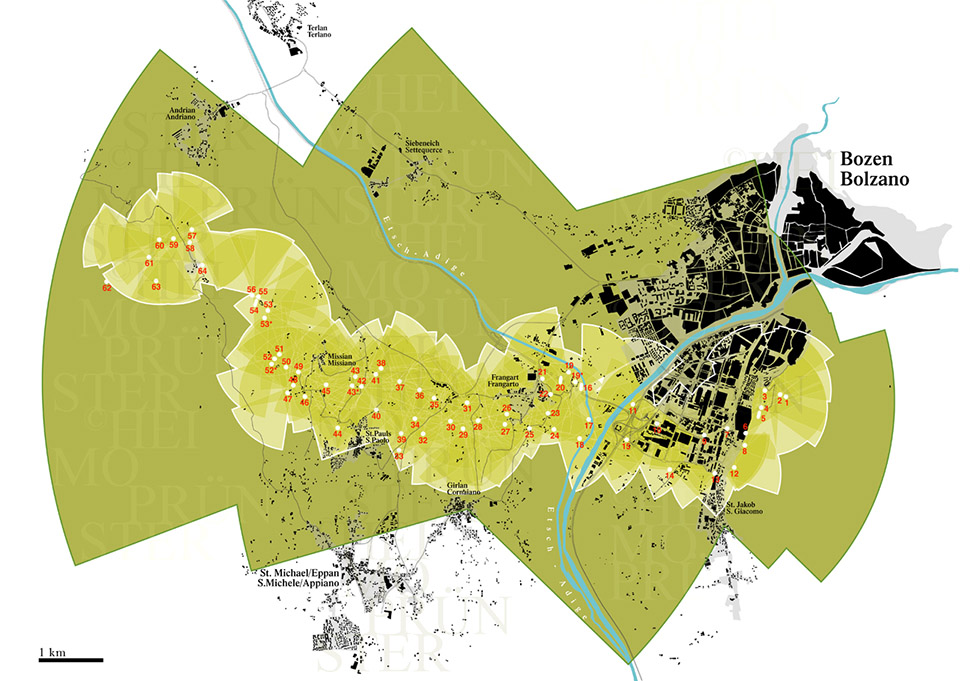

- - - - - - - - - - - - - - - - - - - - - - - - - - - - - - - - - - - - - - - - - - - - - 5 -MULTIPLE FIRING RANGES | CAMPI DI TIRO MULTIPLI | MULTIPLE SCHUSSFELDER[EN] Reconstruction of the effective field of fire of the Olang-Rasen-Antholz dam, status 1968. [IT] Ricostruzione dei campi di tiro effettivi dello sbarramento Rasun-Valdaora, situazione nel 1968. [DE] Rekonstruktion des effektiven Schussfelds der Talsperre Olang-Rasen-Antholz, Stand 1968. 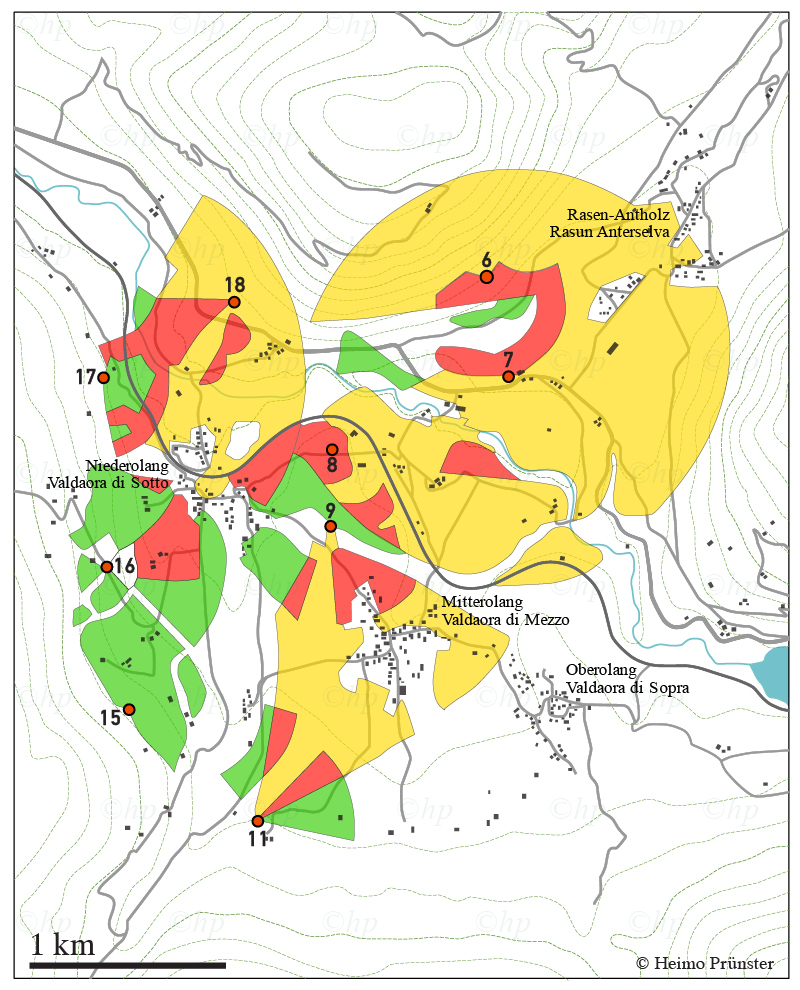
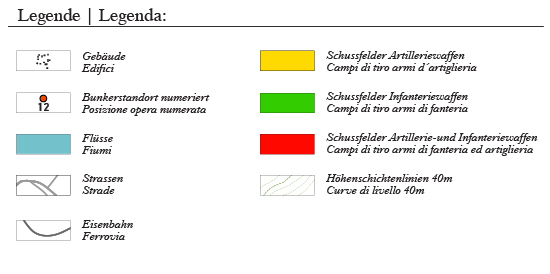
- - - - - - - - - - - - - - - - - - - - - - - - - - - - - - - - - - - - - - - - - - - - - - - - - - - - - - - - - - - - - - EXAMPLE OF NUMBERS | ESEMPIO DI NUMERI | ZAHLENBEISPIEL - - - - - - - - - - - - - - - - - - - - - - - - - - - - - - - - - - - - - - - - - - - - - - - - - - - - - - - - - - - - - - - 1 -[EN]THE VAL IN NUMBERS By the end of 1942, as all construction work was definitely suspended, there were 1475 completed bunkers, 700 defensive casemates, 450 unfinished bunkers and 1400 bunkers yet to plan. Chief of staff Gen. Ambrosio wrote: "The defensive system does not constitute an organic or at least ideally continuous obstacle. (...) In the present conditions it does not guarantee in any way the closure of the frontier, but at most provides support for the defensive deployment of the troops." [IT] IL VAL IN CIFRE Nell'autunno del 1942, con la definitiva sospensione di tutti i lavori di costruzione, c'erano 1475 opere completate, 450 opere incomplete e 1400 ancora da progettare, inoltre 700 casermette difensive. Il Capo di Stato Maggiore Ambrosio scrisse: "Il sistema difensivo non ostituisce un ostacolo organico o almeno idealmente continuo. (...) Nelle condizioni attuali non garantisce in nessun modo la chiusura della frontiera, ma tutt' al più fornire un appoggio allo schieramento difensivo delle grandi unità." [DE] DER VAL IN ZIFFERN Im Herbst 1942, als alle Bauarbeiten endgültig eingestellt wurden, gab es 1475 fertiggestellte, 450 unfertige und 1400 noch zu planende Bunker, sowie 700 Verteidigungskasematten. Der Generalstabschef des Heeres Ambrosio schrieb: "Das Verteidigungssystem stellt kein organisches oder wenigstens durchgehendes Hindernis dar. (...) Unter den gegenwärtigen Bedingungen garantiert es in keiner Weise die Schließung der Grenze, sondern unterstützt bestenfalls den defensiven Einsatz der Truppen." - - - - - - - - - - - - - - - - - - - - - - - - - - - - - - - - - - - - - - - - - - - - - 2 -[EN]SOUTH TYROL IN NUMBERS This table dates back to January 1940 and shows how many defensive structures were planned for South Tyrol, how their armaments and other technical equipment were layed out, and even how much soldiers and officials had to be available in the bunkers. The figures have been revised several times, but provide a realistic picture of the huge quantities. [IT] L'ALTO ADIGE IN CIFRE Questa tabella risale al gennaio 1940 e mostra quante strutture difensive erano previste per l'Alto Adige, come erano stati progettati i loro armamenti e altri equipaggiamenti tecnici e persino quanti uomini di presidio dovevano essere disponibili nei bunker. Le cifre sono state riviste più volte, ma forniscono un quadro realistico delle quantità. [DE] SÜDTIROL IN ZIFFERN Diese Tabelle stammt aus dem Januar 1940 und zeigt, was für Südtirol an Verteidigungsbauten vorgesehen war, wie ihre Ausstattung an Bewaffnung, sonstigen technischen Ausrüstung ausgelegt war, sowie wieviel Mann Besatzung in den Bunkern zur Verfügung stehen sollten. Die Zahlen wurden noch mehrfach überarbeitet, geben aber einen realistischen Einblick über die Mengen. 
- - - - - - - - - - - - - - - - - - - - - - - - - - - - - - - - - - - - - - - - - - - - - 3 -[EN]THE BOLZANO SOUTH BARRIER IN NUMBERS A list of the Bolzano South barrier with data from a memorandum of the Italian Ministry of War in Rome, dated 6 February 1940, addressed to the Commander-in-Chief of the Italian Armed Forces, with the following subject: "Project for the Defence System at the German Border". The cost of construction of this barrier was estimated at 55,000,000 ital. Lire . The sum was calculated for the construction of the facilities without interior fittings. In the same document the cost of the barrier with full equipment is estimated at 70.000.000 ital. Lire. The total crew of all the barrier's facilities was to consist of 70 officers, 1608 soldiers, including 22 non-commissioned officers. After a later modified project, only the shell structures of the monoblock bunkers without interior fittings were realized. In many places, the cavern bunkers were not completed. None of the bunkers was ever used for the purpose for which it was originally built. [IT] LO SBARRAMENTO BOLZANO SUD IN CIFRE Un elenco dello sbarramento di Bolzano Sud tratto da un Promemoria del Ministero della Guerra di Roma in data 6 febb. 1940 indirizzato al Capo di Stato Maggiore dell'Esercito con il seguente oggetto: "Progetti di massima sistemazione difensiva frontiera germanica". L'importo dei costi previsti per la costruzione di questo sbarramento era di 55.000.000 Lire italiane. La somma era calcolata per la costruzione delle opere senza allestimenti. Il costo dello stesso sbarramento al completo di allestimenti é presunto con 70.000.000 Lire italiane. Il presidio complessivo dello sbarramento doveva consistere di 70 ufficiali, 1608 truppa, fra cui 22 sottoufficiali. La realizzazione fu conseguita a seconda di un progetto leggermente modificato, furono peró solo realizzate le parti murarie delle opere monoblocco, in gran parte i lavori per le opere in caverna non furono ultimati. Nessuna di queste opere fu mai usata per lo scopo originale. [DE] DIE TALSPERRE BOZEN SÜD IN ZIFFERN Eine Auflistung zur Talsperre Bozen Süd mit Daten aus einem Memorandum des italienischen Kriegsministeriums in Rom, datiert mit 6. Februar 1940, adressiert an den Oberbefehlshaber der italienischen Streitkräfte, mit folgendem Betreff: "Maximalprojekt für das Verteidigungssystem an der deutschen Grenze". Die Kosten für den Bau dieser Sperre waren mit 55.000.000 ital. Lire beziffert. Die Summe war für den Bau der Anlagen ohne Innenausstattung berechnet. Die Kosten für die Talsperre mit vollständiger Ausstattung werden im selben Dokument auf 70.000.000 ital. Lire geschätzt. Die Gesamtbesatzung aller Anlagen der Talsperre soll aus 70 Offizieren, 1608 Soldaten, darunter 22 Unteroffiziere, bestehen. Verwirklicht wurden nach einem später modifizierten Projekt nur die Rohbauten der Monoblock-Bunker ohne Innenausstattung, die Rohbauten für die Kavernenbunker wurden vielerorts nicht fertiggestellt. Keiner dieser Bunker wurde je für den Zweck genutzt, für den er errichtet wurde. 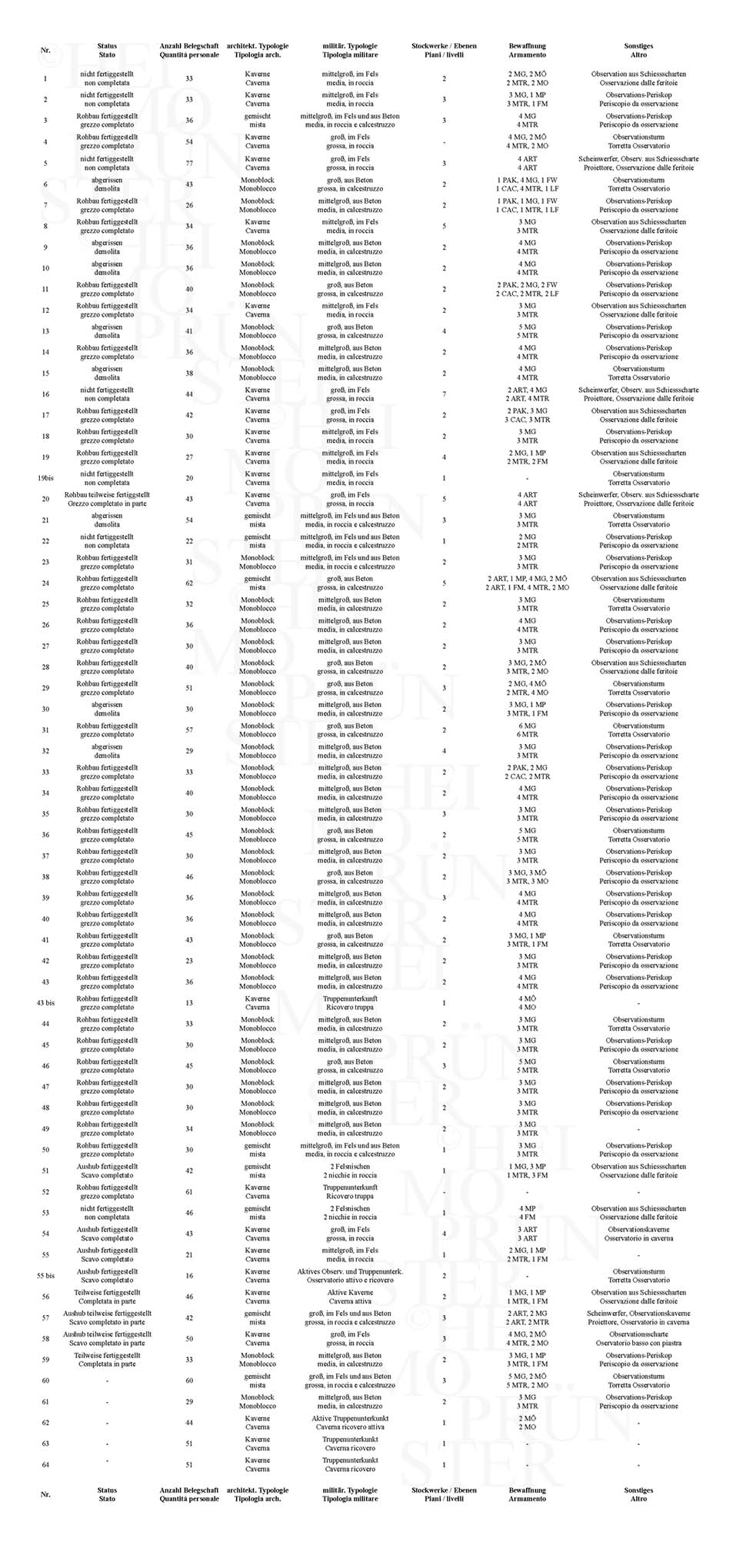
______________________________________________________________________________________________________________________________________________________ CONSTRUCTIVE DETAILS | DETTAGLI COSTRUTTIVI | KONSTRUKTIVE DETAILS ______________________________________________________________________________________________________________________________________________________ - 1 -PERFORATIONS OF THE CONCRETE SHELL | PERFORAZIONI DELL´ INVOLUCRO DI CEMENTO | PERFORIERUNGEN DER BETONHÜLLE 
- - - - - - - - - - - - - - - - - - - - - - - - - - - - - - - - - - - - - - - - - - - - - 2 -SINGLE FLOOR PLAN | PIANTA SINGOLA | GRUNDRISS EINZELN Grundriss des Bunkers Nr. 33 der Verteidigungslinie Bozen Süd | Pianta dell´opera n. 33 dello Sbarramento Bolzano Sud 
- - - - - - - - - - - - - - - - - - - - - - - - - - - - - - - - - - - - - - - - - - - - - 3 -[EN] FLOOR PLAN AND SECTIONS Reconstruction of the bunker no. 14 of the defensive line Bolzano South on the basis of a plan drawing from 9 March 1940. The camouflage as a hill shown here was not implemented, the bunker was camouflaged as a farmhouse. In the entrance area a rectangular caponnière was added. (As a rule, caponniers were laid out in a circle, since the field of fire was better visible in this way and less material was required). [IT] PIANTA E SEZIONI Ricostruzione del progetto per l´opera n. 14 dello Sbarramento Bolzano Sud a base di un disegno del 9 marzo 1940. Il mascheramento "tipo interramento" non é stato realizzato. Il progetto del mascheramento venne sostituito con un mascheramento a finto maso. Vicino all´ingresso fu aggiunta una caponiera con una pianta rettangolare. (Di solito le caponiere vennero realizzate in forma circolare, perché permettevano una migliore copertura del campo di tiro e si risparmiava materiali costruttivi). [DE] GRUNDRISS UND SCHNITTE Rekonstruktion des Bunkers Nr. 14 der Verteidigungslinie Bozen Süd auf Basis einer Planzeichnung vom 9. März 1940. Die hier abgebildete Tarnung als Erdhügel wurde nicht umgesetzt. Das Tarnungsprojekt wurde später abgeändert und der Bunker mit einer vorgesetzten Fassade als Bauernhaus getarnt. Im Eingangsbereich wurde noch eine im Grundriß rechteckige Kaponniere hinzugefügt. (Kaponnieren wurden in der Regel kreisförmig angelegt, da das Schussfeld auf diese Weise besser einsichtig war und dabei weniger Materialaufwand entstand). 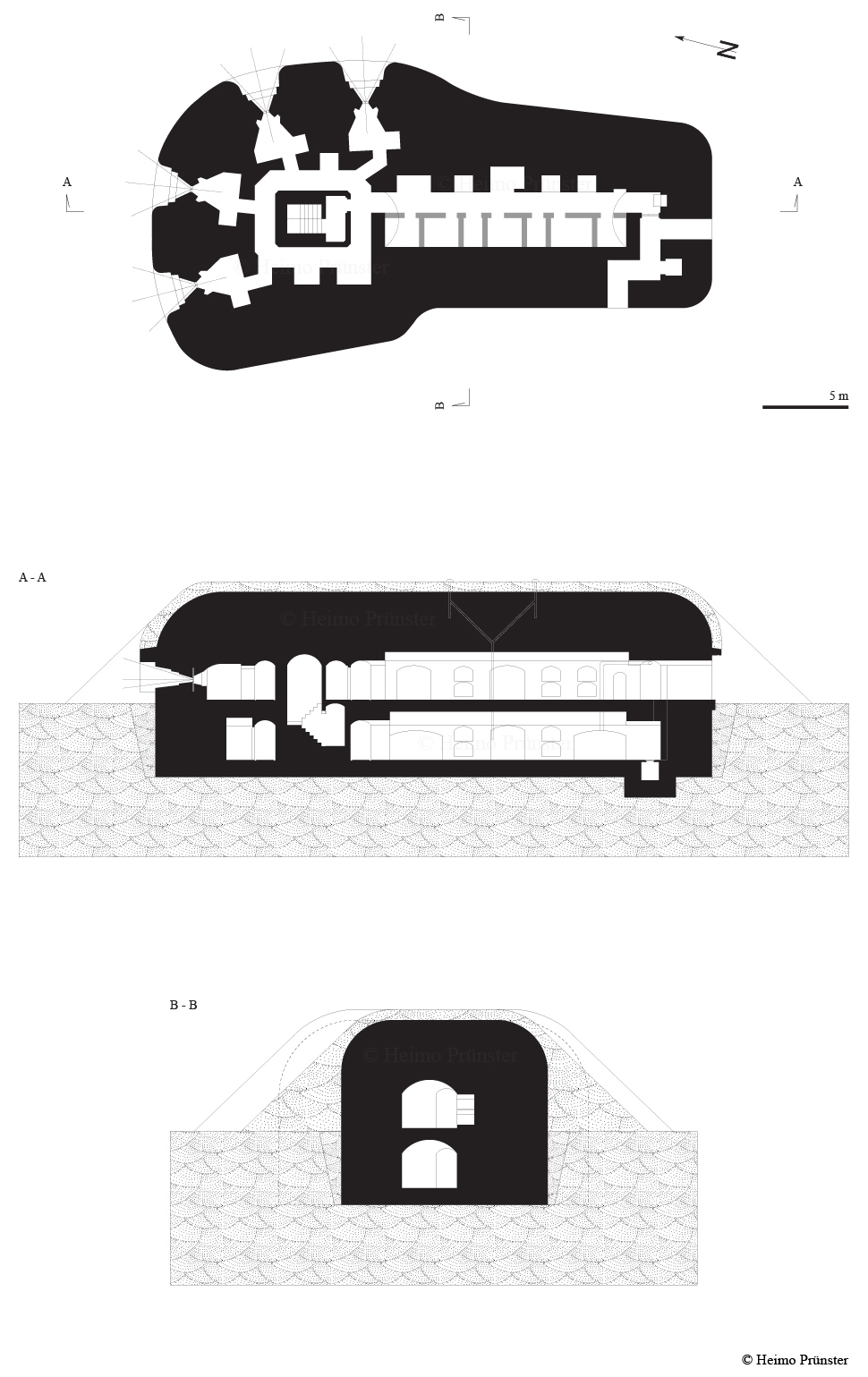
- - - - - - - - - - - - - - - - - - - - - - - - - - - - - - - - - - - - - - - - - - - - - 4 -FLOOR PLAN WITH FIRING RANGE | GRUNDRISS MIT SCHUSSFELD | PIANTA CON CAMPO DI TIRO [EN] Scaled representation of the floor plan of bunker no. 29 and the corresponding maximum firing area . [IT] Raffigurazione in scala della pianta dell´opera 29 e del suo campo di tiro massimo [DE] Massstäbliche Darstellung des Grundrisses von Bunker Nr. 29 sowie dem dazugehörigen, maximalen Schussfeld 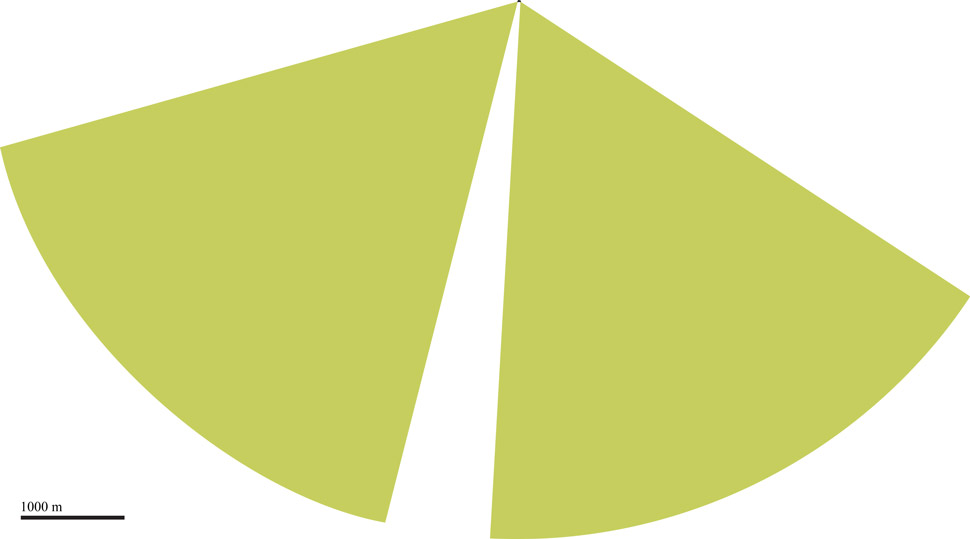
______________________________________________________________________________________________________________________________________________________ SOCIAL TERRITORIES | TERRITORI SOCIALI | SOZIALE FELDER ______________________________________________________________________________________________________________________________________________________ [EN] Over time the bunkers were used - more or less illegally - but still: by farmers on whose expropriated land they had been built, for example as an agricultural deposit, as a wine cellar, as a water reservoir, as an agricultural cultivation area by covering a bunker with soil and planting it, as foundation for other constructions etc. But not only: the bunkers offered space for activities that had none: black fairs, orgiastic festivals, rehearsal rooms for socially unacceptable forms of music, conspiratorial meetings, tests of courage, vandalism, shooting exercises, technoparties and graffiti are just a few of the colourful variety of uses. In addition to these practical uses, the bunkers also gave space to a social phenomenon: for many, especially for young people, they offered a simply unmonitored free space and thus also a free field of experimentation - for more or less social experiments. A social gap for projections of the non-everyday. Ironically, this phenomenon occurs in buildings designed to exercise control. [IT] Nel passare degli anni i bunker furono lo stesso usati - in modo non del tutto legale: da parte di contadini che erano gli ex-proprietari dei terreni sui quali vennero costruiti i bunker. Per esempio come magazzino agricolo, cantina per vini, serbatoio d´acqua, in certi casi furono ricoperti di terra per diventare superficie coltivabile, come base per altre costruzioni ecc. Peró non solo: i bunker diedero anche spazio ad attivitá per cui altrimenti difficilmente lo si trovava: messe nere, feste orgiastiche, sale prova, incontri cospirativi, prove di coraggio, atti di vandalismo, esercitazioni di tiro, eventi di tecno e graffiti sono solo alcuni esempi. Ed oltre a questi usi pratici diedero spazio a un fenomeno sociale: i bunker raffiguravano dei spazi privi di monitoraggio. Per questo divennero anche un campo libero per esperimenti piú o anche meno sociali. Un´interstizio nella societá che permetteva proiezioni del non-quotidiano. Ironicamente questo fenomeno si verifica proprio in luoghi che furono concipiti per esercitare il controllo (territoriale). [DE] Genutzt wurden die Bunker über die Zeit - mehr oder minder illegal - aber doch: zum Beispiel von Bauern, auf deren enteigneten Grund sie errichtet worden waren, etwa als landwirtschaftliche Lagerstätte, als Weinkeller, als Wasserreservoir, als landwirtschaftliche Anbaufläche indem ein Bunker mit Erde zugeschüttet und bepflanzt wurde, als Fundament für andere Bauten uva. Aber nicht nur: die Bunker boten Raum für Aktivitäten, für die sonst keiner war: schwarze Messen, orgiastische Feste, Proberäume für gesellschaftlich nicht sonderlich akzeptierte Musikformen, konspirative Treffen, Mutproben, Vandalismus, Schiessübungen, Technoparties und Graffiti sind nur einige der bunten Vielfalt an Nutzungen. Neben diesen praktischen Nutzungen gaben die Bunker aber auch einem sozialen Phänomen Raum: sie boten für viele, vor allem für Jugendliche, einen einfach nicht monitorierten Freiraum und somit auch ein freies Exezierfeld für mehr und weniger soziale Experimente. Eine gesellschaftliche Lücke für Projektionen des Nicht-Alltäglichen. Ironischerweise tritt dieses Phänomen genau in solchen Gebäuden auf, die zur Ausübung von (territorialer) Kontrolle konzipiert wurden.   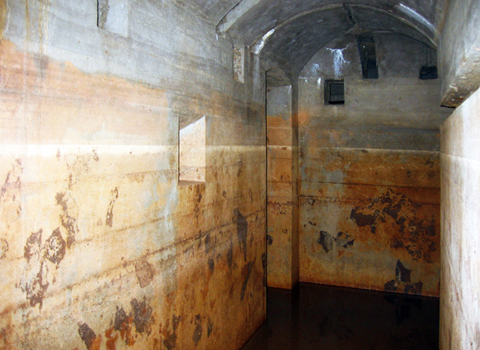  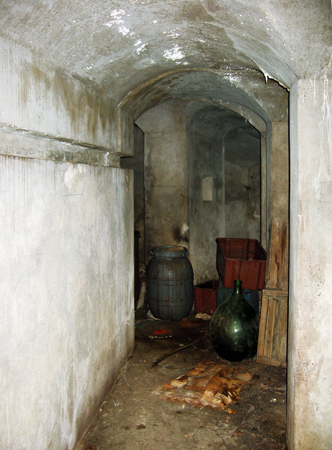 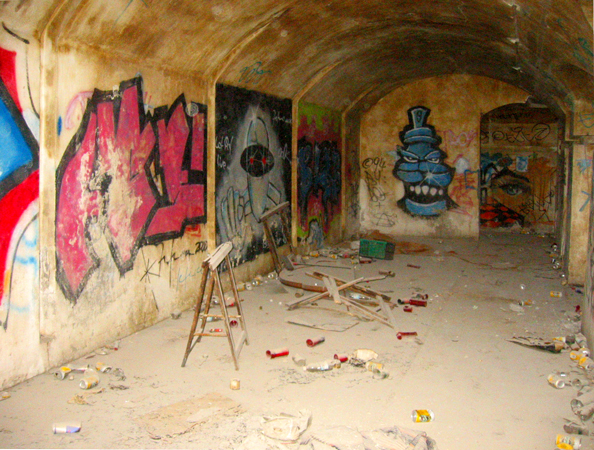 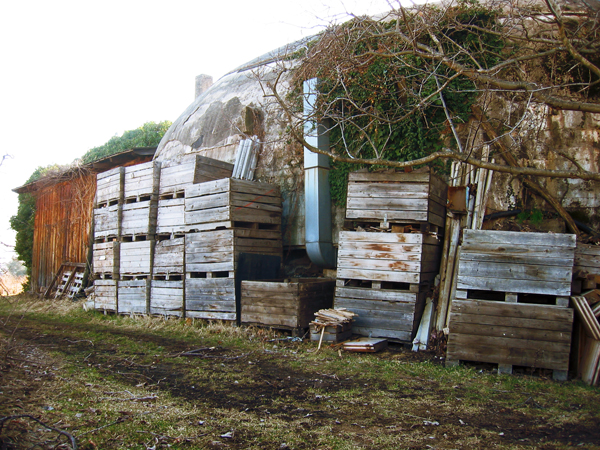  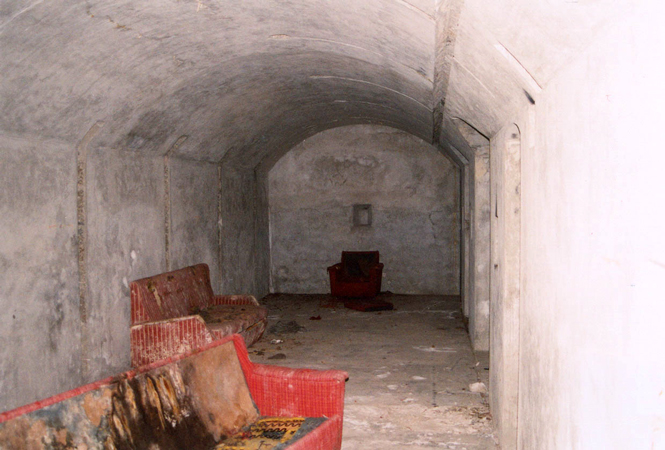   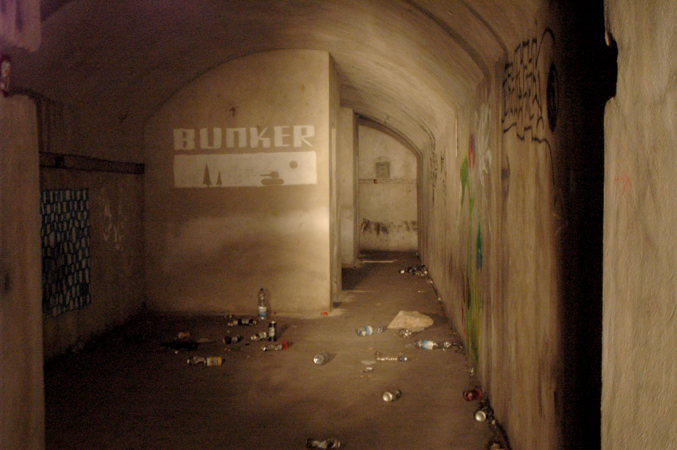 
 ...to be continued  
< |
||
Site by
•••••••;